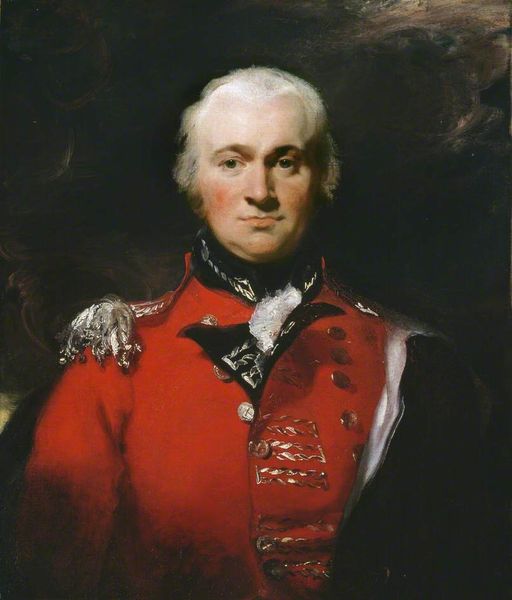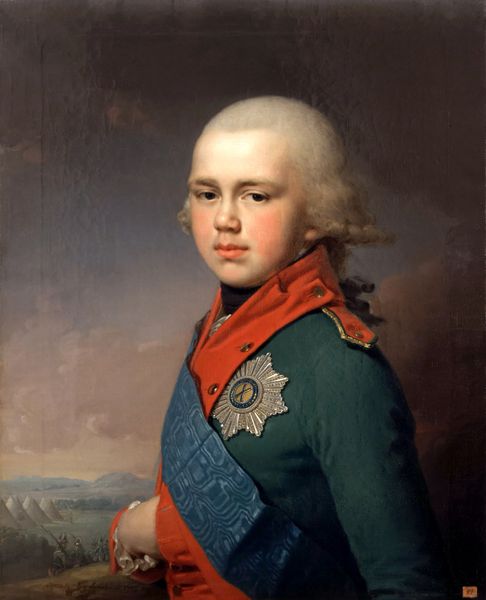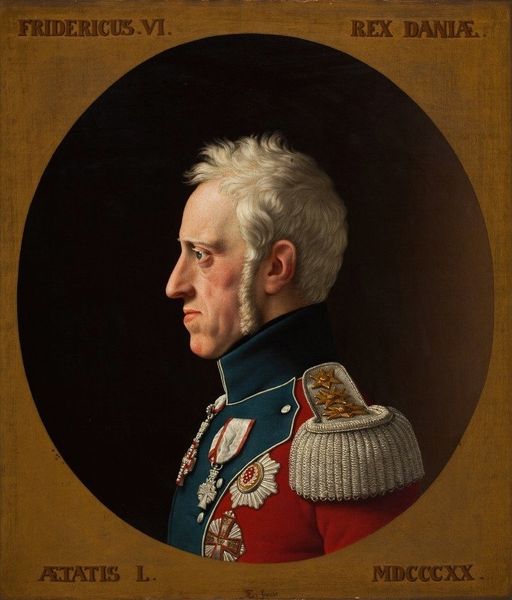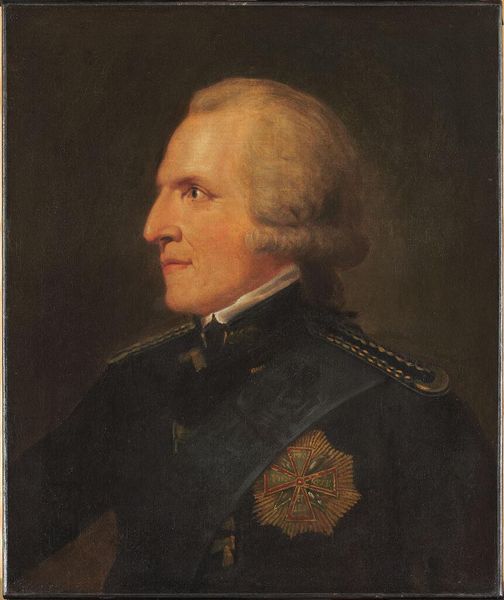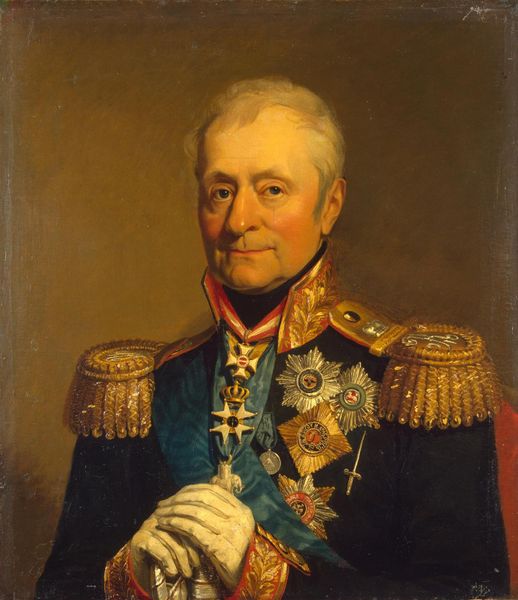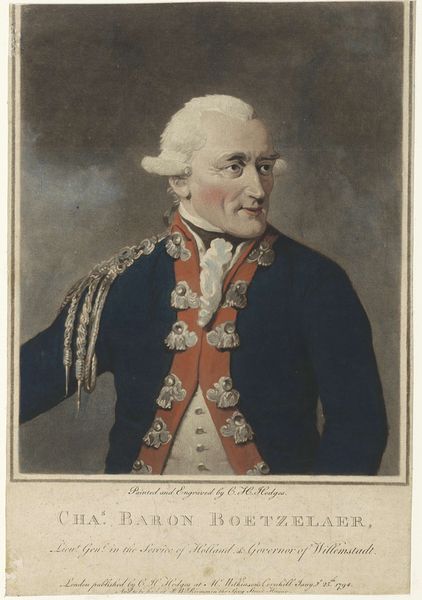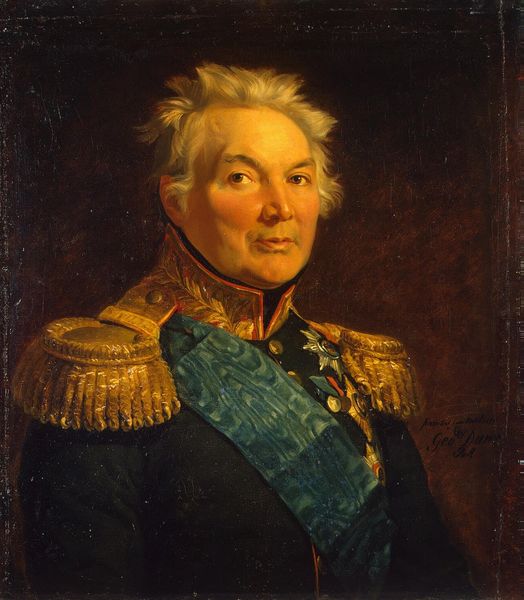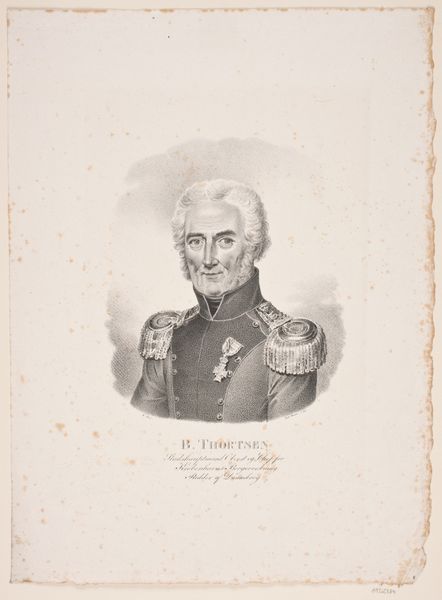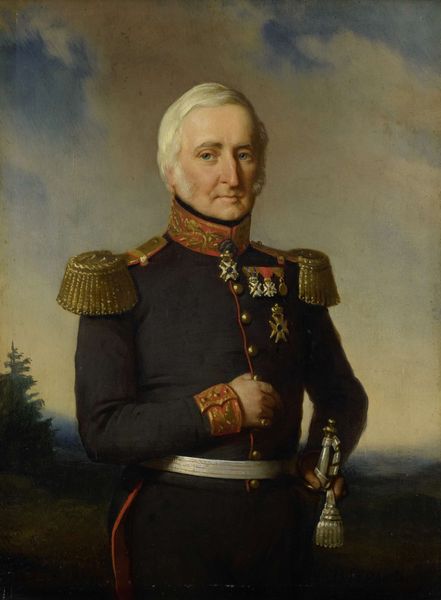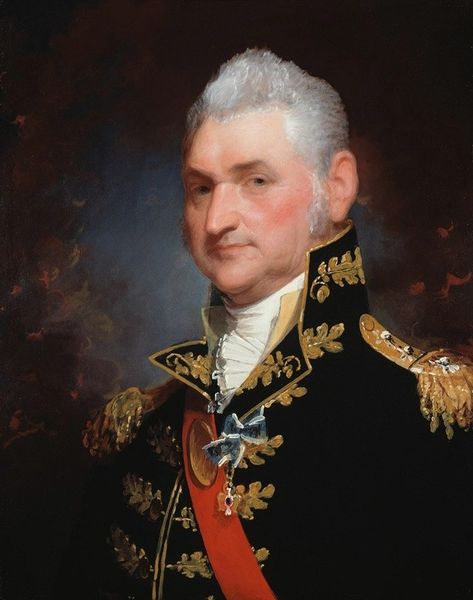
painting
#
portrait
#
painting
#
romanticism
#
history-painting
#
realism
Dimensions: 68 x 56 cm
Copyright: Public domain
Curator: Looking at "Portrait of Khristofor von Benckendorff," painted by Vladimir Borovikovsky in 1797, I immediately see a formal, almost stiff representation of power and status, a figure carefully positioned within the broader social fabric. Editor: I notice the fabric itself. Look at the weave and the almost unsettling texture in how the oil paint creates the skin; it feels immediate and raw despite its aristocratic subject. Curator: That rawness is intriguing. I find myself drawn to the historical and societal implications. Benckendorff's position in the court of Paul I represents a particular alignment of power during a tumultuous period, an alliance mirrored by the portrait’s clear indications of military might through his attire and ornamentation. How does the construction of that visual power relate to the era’s rapidly shifting political dynamics? Editor: I'm more captivated by the actual materials. The pigments used, likely imported or at least processed with meticulous care; that lapel, constructed to both adorn and constrain—the labour it must have taken is unimaginable in today’s world of mass production, right down to that medal, a tangible piece of metal linking aristocratic status to material display. Curator: Of course. Considering feminist theory, this male portrait reinforces societal norms by illustrating the dominant male figure; further examination shows it mirrors many patriarchal social systems. Does the construction of identity within this artwork then enforce social power structures? Editor: And how do we grapple with the consumption of it? Benckendorff, an aristocrat displaying wealth, commissioned Borovikovsky, the artist; then others viewed the completed piece—a complex chain of material creation, consumption, and preservation reflecting status and artistry. Who possessed it after its creation, and where has it resided all these years? What journey has the painting undergone since its inception? Curator: Considering his prominent role as a general during a time of conflict and also chief of staff in St. Petersburg later, it’s clear his story isn’t merely an individual saga, but also of military identity amid revolution. Understanding this enables deeper recognition regarding societal gender norms reinforced at that time. Editor: Agreed; tracing the object’s production to its consumption also opens critical narratives to societal issues and concerns with class and power during 18th century Europe. The red lapel now almost seems ominous given today’s perspective on conflict. Curator: Precisely, so analyzing portraits like this requires an interdisciplinary approach melding art history alongside sociology or feminism to bring historical relevance for conversations involving today. Editor: Examining "Portrait of Khristofor von Benckendorff," from pigment to politics, the painting serves not only visual display but also a symbol for historical labour and consumption in that era.
Comments
No comments
Be the first to comment and join the conversation on the ultimate creative platform.
